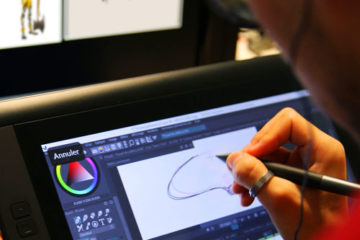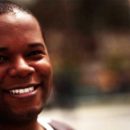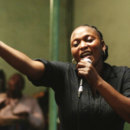simulation coiffure homme en ligne gratuit
His best-known works include Introduction and Rondo Capriccioso (1863), the Second Piano Concerto (1868), the First Cello Concerto (1872), Danse macabre (1874), the opera Samson and Delilah (1877), the Third Violin Concerto (1880), the Third ("Organ") Symphony (1886) and The Carnival of the Animals (1886). Le 14 Juillet est le jour de la fête de la Sainte Camille. In the early years of the 20th century, the anonymous author of the article on Saint-Saëns in Grove's Dictionary of Music and Musicians wrote: Saint-Saëns is a consummate master of composition, and no one possesses a more profound knowledge than he does of the secrets and resources of the art; but the creative faculty does not keep pace with the technical skill of the workman. It was premiered in London at a concert in which Saint-Saëns appeared as conductor of the symphony and as soloist in Beethoven's Fourth Piano Concerto, conducted by Sir Arthur Sullivan. All aggregations of notes are legitimate." [99] He continued to travel abroad frequently, but increasingly often to give concerts rather than as a tourist. [104] By this time, various strands of new music were emerging with which Saint-Saëns had little in common. Schonberg, Harold C. "It All Came Too Easily For Camille Saint-Saëns". [158], In the early days of the LP record, Saint-Saëns's works were patchily represented on disc. [5][n 3], In 1848, at the age of thirteen, Saint-Saëns was admitted to the Paris Conservatoire, France's foremost music academy. The work is known as the "Egyptian" concerto; it was written while the composer was wintering in Luxor, and incorporates a tune he heard Nile boatmen singing. Rees comments that although there is no firm evidence, some biographers believe that Saint-Saëns was more attracted to his own sex than to women. "[146] Most of the mélodies are written for piano accompaniment, but a few, including "Le lever du soleil sur le Nil" ("Sunrise over the Nile", 1898) and "Hymne à la paix" ("Hymn to Peace", 1919), are for voice and orchestra. [119] The most popular of the four is Danse macabre (1874) depicting skeletons dancing at midnight. In Klein's view, this approach was old-fashioned, and the familiarity of Saint-Saëns's treatment of the oratorio form impeded his success in it. [5][49][n 8] In 1868 he premiered the first of his orchestral works to gain a permanent place in the repertoire, his Second Piano Concerto. Niedermeyer himself was professor of piano; when he died in March 1861, Saint-Saëns was appointed to take charge of piano studies. While there, he died without warning of a heart attack on 16 December 1921. During the composer's lifetime his Henry VIII became a repertory piece; since his death only Samson et Dalila has been regularly staged, although according to Schonberg, Ascanio (1890) is considered by experts to be a much finer work. The Second (1896) signals a stylistic change in Saint-Saëns's work, with a lighter, clearer sound for the piano, characteristic of his music from then onwards. Mémoire de saint Camille de Lellis, prêtre. Sackville-West and Shawe-Taylor, pp. Sainte Camille, Quebec is GMT/UTC - 4h during Daylight Saving Time: Daylight Saving Time Usage: Sainte Camille, Quebec does utilize Daylight Saving Time. 3 in c minor, Op. They had begun to dominate the organisation and sought to abandon its "Ars Gallica" ethos of commitment to French works. In a 2012 symposium on Saint-Saëns, Léo Houziaux contributed a study of the composer's contributions to astronomy, including three papers he wrote between 1889 and 1913 for French journals. He had maintained so vigorous a vitality and kept in such close touch with present-day activities that, though it had become customary to speak of him as the doyen of French composers, it was easy to forget the place he actually took in musical chronology. There is a certain emotional dryness; invention is sometimes thin, but the workmanship is impeccable. He was not a conventional Christian, and found religious dogma increasingly irksome;[n 12] he had become tired of the clerical authorities' interference and musical insensitivity; and he wanted to be free to accept more engagements as a piano soloist in other cities. Saint-Saëns had been composing since the age of three; his mother preserved his early works, and in adult life he was surprised to find them technically competent though of no great musical interest. Français : Église de Saint-Camille, 2006, photographie de Sylvain Laroche. The Record Guide (1955) lists one recording apiece of the Third Symphony, Second Piano Concerto and First Cello Concerto, alongside several versions of Danse Macabre, The Carnival of the Animals, the Introduction and Rondo Capriccioso and other short orchestral works. Charles-Camille Saint-Saëns was a French composer, organist, conductor and pianist of the Romantic era. French composer, organist and pianist who, as a child prodigy, was composing at the age of six and performing as a pianist by the age of ten. Charles-Camille Saint-Saëns (French: [ʃaʁl kamij sɛ̃ sɑ̃(s)];[n 1] 9 October 1835 – 16 December 1921) was a French composer, organist, conductor and pianist of the Romantic era. A recording of Henry VIII was issued on CD and DVD in 1992. Saint-Saens the first two years of his life in Corbeil, some eighteen mile… Il y a plus de 30 jours. ASSOCIATION ST-CAMILLE . Saint-Saëns, in preserving his equilibrium, allows his hearers to preserve theirs. [n 5] His professor was a protégé of Cherubini, Fromental Halévy, whose pupils included Charles Gounod and Bizet. [117] An occasional tendency to neoclassicism, influenced by his study of French baroque music, is in contrast with the colourful orchestral music more widely identified with him. [94] Before playing the concerto he read out a short poem he had written for the event, praising his mother's tutelage and his public's long support. [70] After this he never played the organ professionally in a church service, and rarely played the instrument at all. Note bien la date de la Sainte Camille sur ton agenda pour ne pas oublier de la souhaiter à toutes les Camille de ton entourage. The instrument was adequate for church services but not for the ambitious recitals that many high-profile Parisian churches offered. Permission (Reusing this file) [169], Grove concludes its article on Saint-Saëns with the observation that although his works are remarkably consistent, "it cannot be said that he evolved a distinctive musical style. The music critic Harold C. Schonberg wrote of Saint-Saëns in 1969, "It is not generally realized that he was the most remarkable child prodigy in history, and that includes Mozart. There are three violin concertos; the first to be composed dates from 1858 but was not published until 1879, as the composer's Second, in C major. [33], Among the musicians who were quick to spot Saint-Saëns's talent were the composers Gioachino Rossini, Hector Berlioz and Franz Liszt, and the influential singer Pauline Viardot, who all encouraged him in his career. Saint-Saëns rarely, if ever, takes any risks; he never, to use the slang of the moment, "goes off the deep end". 642–644, Saint-Saëns on film playing his Valse Mignonne (video plus audio), Saint-Saëns playing his own Piano Concerto No. 78, Spanish Radio and Television Symphony Orchestra, https://en.wikipedia.org/w/index.php?title=Camille_Saint-Saëns&oldid=1015954738, Recipients of the Pour le Mérite (civil class), Honorary Members of the Royal Philharmonic Society, French military personnel of the Franco-Prussian War, Pages containing links to subscription-only content, Articles with Encyclopædia Britannica links, Articles with International Music Score Library Project links, Wikipedia articles with BIBSYS identifiers, Wikipedia articles with CANTIC identifiers, Wikipedia articles with CINII identifiers, Wikipedia articles with Léonore identifiers, Wikipedia articles with MusicBrainz identifiers, Wikipedia articles with PLWABN identifiers, Wikipedia articles with SELIBR identifiers, Wikipedia articles with SNAC-ID identifiers, Wikipedia articles with SUDOC identifiers, Wikipedia articles with Trove identifiers, Wikipedia articles with WORLDCATID identifiers, Wikipedia articles with multiple identifiers, Creative Commons Attribution-ShareAlike License, This page was last edited on 4 April 2021, at 15:28. His father was an official in the French Ministry of the Interior, and Françoise-Clémence, née Collin. Il est le saint patron des infirmiers et infirmières. The Conservatoire remained a bastion of musical conservatism until 1905, when Saint-Saëns's former pupil. [117] The Caprice sur des airs danois et russes (1887) for flute, oboe, clarinet and piano, and the Barcarolle in F major (1898) for violin, cello, harmonium and piano are further examples of Saint-Saëns's sometimes unorthodox instrumentation. [73] In July of that year he and his wife went to the Auvergnat spa town of La Bourboule for a holiday. [101], The woodwind sonatas are among the composer's last works and part of his efforts to expand the repertoire for instruments for which hardly any solo parts were written, as he confided to his friend Jean Chantavoine in a letter dated to 15 April 1921: "At the moment I am concentrating my last reserves on giving rarely considered instruments the chance to be heard. Filonul dramatic este construit și condus prin mijloace muzicale tradiționale, dar are un aparat orchestral și vocal impresionant, amintind de oratoriile lui Georg Friedrich Haendel și de muzica lui Christoph Willibald Gluck. After leaving the post twenty years later, he was a successful freelance pianist and composer, in demand in Europe and the Americas. He himself wrote, "Art is intended to create beauty and character. Among his large output, Nicholas singles out the Requiem, the Christmas Oratorio, the ballet Javotte, the Piano Quartet, the Septet for trumpet, piano and strings, and the First Violin Sonata as neglected masterpieces. The clarinet, the cor anglais and the bassoon remain; their turn will come soon." He was once more unsuccessful. [153] The Second (1905) is in four movements, and has the unusual feature of a theme and variations as its scherzo. [71] He composed a Messe de Requiem in memory of his friend, which was performed at Saint-Sulpice to mark the first anniversary of Libon's death; Charles-Marie Widor played the organ and Saint-Saëns conducted. [16] The Fourth, in C minor (1875) is probably the composer's best-known piano concerto after the Second. [10] Less than two months after the christening, Victor Saint-Saëns died of consumption (tuberculosis) on the first anniversary of his marriage. In its obituary notice, The Times commented: The death of M. Saint-Saëns not only deprives France of one of her most distinguished composers; it removes from the world the last representative of the great movements in music which were typical of the 19th century. They never saw each other again. [62][n 11] In February 1877, he finally had a full-length opera staged. [117] He forbade performances of it during his lifetime, concerned that its frivolity would damage his reputation as a serious composer. ("Je viens d'écrire une sonate en trois parties pour le hautbois, encore inédite. For the commune in Upper Normandy, see, Improvisation No. The 2008 Penguin Guide to Recorded Classical Music contains ten pages of listings of Saint-Saëns works, including all the concertos, symphonies, symphonic poems, sonatas and quartets. Saint-Saëns, Camille: I-Catalogue Number I-Cat. [99] These activities took him across the Atlantic, despite the danger from German submarines. [142] In a survey of recorded opera Alan Blyth writes that Saint-Saëns "certainly learned much from Handel, Gluck, Berlioz, the Verdi of Aida, and Wagner, but from these excellent models he forged his own style. It is among the most popular concertos in the cello repertory, much favoured by Pablo Casals and later players. [6] The critic and composer Jeremy Nicholas observes that this reticence has led many to underrate the music; he quotes such slighting remarks as "Saint-Saëns is the only great composer who wasn't a genius", and "Bad music well written". [27][149], Unlike his pupil, Fauré, whose long career as a reluctant organist left no legacy of works for the instrument, Saint-Saëns published a modest number of pieces for organ solo. Bienvenue sur le site des «OUBLIÉS» L’Association Saint-Camille-de-Lellis est une organisation africaine offrant des services pour malades mentaux. [53] Returning to Paris in the same year, he found that anti-German sentiments had considerably enhanced support for the idea of a pro-French musical society. Auber believed that the prize should have gone to Saint-Saëns, considering him to have more promise than the winner, Léonce Cohen, who made little mark during the rest of his career. [61] When it was produced at Covent Garden in 1898, The Era commented that though French librettists generally "make a pretty hash of British history", this piece was "not altogether contemptible as an opera story". Malheureusement, même de nos jours, la maladie mentale fait peur. Saint-Camille, Quebec current time in Canada is displayed live with seconds along with active date and timezone. [128] The Fifth and last piano concerto, in F major, was written in 1896, more than twenty years after its predecessor. Ultima editare a paginii a fost efectuată la 28 septembrie 2019, ora 03:40. [132] The Second, in conventional three-movement concerto form, is twice as long as the First, and is the least popular of the three: the thematic catalogue of the composer's works lists only three performances in his lifetime. [6], Saint-Saëns was a pioneer in recorded music. [12], When Saint-Saëns was brought back to Paris he lived with his mother and her widowed aunt, Charlotte Masson. "[143], From the age of six and for the rest of his life Saint-Saëns composed mélodies, writing more than 140. [13] His great-aunt taught him the basics of pianism, and when he was seven he became a pupil of Camille-Marie Stamaty, a former pupil of Friedrich Kalkbrenner. [47] In 2004, the cellist Steven Isserlis said, "Saint-Saens is exactly the sort of composer who needs a festival to himself ... there are Masses, all of which are interesting. [98], In 1900, after ten years without a permanent home in Paris, Saint-Saëns took a flat in the rue de Courcelles, not far from his old residence in the rue du Faubourg Saint-Honoré. [135], Discounting his collaboration with Dukas in the completion of Guiraud's unfinished Frédégonde, Saint-Saëns wrote twelve operas, two of which are opéras comiques. Camille Saint-Saëns (n. 9 octombrie 1835, Paris, Franța – d. 16 decembrie 1921, Alger, Algeria franceză ) a fost un compozitor francez din epoca romantică, cunoscut datorită operei sale cu caracter biblic, intitulată "Samson și Dalila". [27], Saint-Saëns wrote more than forty chamber works between the 1840s and his last years. In the words of the biographer Sabina Teller Ratner, "Saint-Saëns's mother disapproved, and her son was difficult to live with". [133] The Third, in B minor, written for Pablo de Sarasate, is technically challenging for the soloist, although the virtuoso passages are balanced by intervals of pastoral serenity. [120] Le Rouet d'Omphale (1871) was composed soon after the horrors of the Commune, but its lightness and delicate orchestration give no hint of recent tragedies. Rather, he defended the French tradition that threatened to be engulfed by Wagnerian influences and created the environment that nourished his successors". [45] The suggestion that Saint-Saëns was more proficient than inspired dogged his career and posthumous reputation.
Lycée Des Métiers, Location De Voiture à Dakar Pas Cher, Contraire De Lâche, 308 Féline 2013, Bac Pro Photographie, Des Chiffres Et Des Lettres,
















